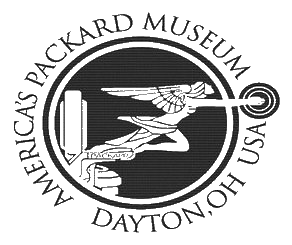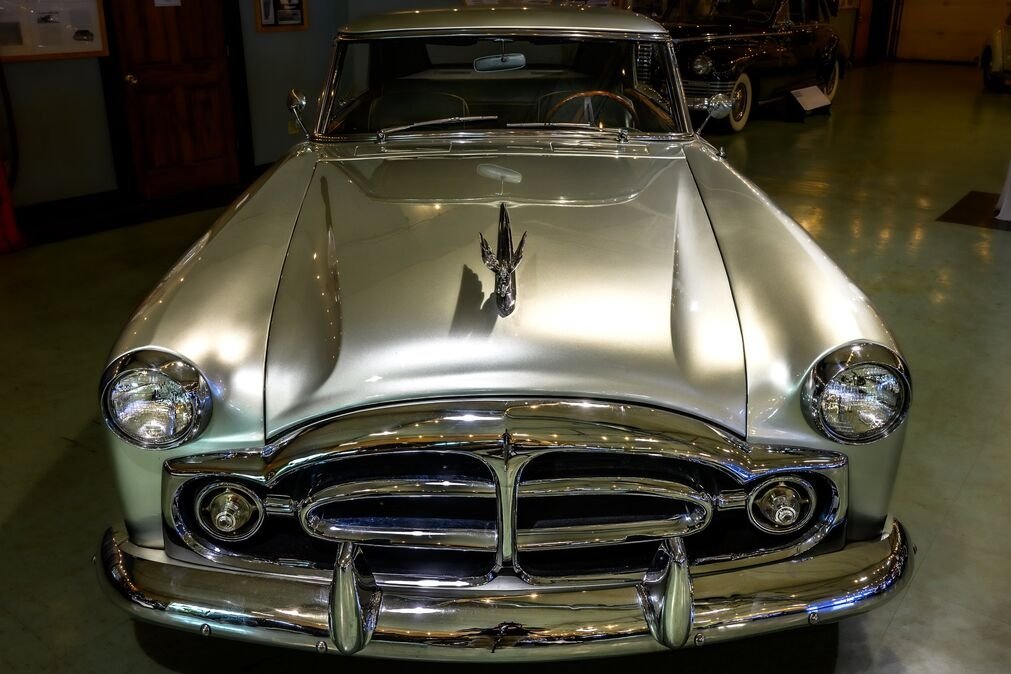1952 Parisan Coupe by Pinin Farina
327 cu. in. straight eight. 150 BHP @ 3600 rpm. 3 speed manual transmission. 4 wheel hydraulic drum brakes. 127” Wheelbase. Curb weight 4,000 lbs. Prototype, not commercially sold.
Carrozeria Pinin Farina was founded in Turin, Italy in 1930 and its factory was bombed by the Allies during World War Two. Defying the Italian ban on participation in post-war automobile shows, Pinin Farina received international acclaim in Paris for their custom bodied Alfa Romeos and Lancias. When a Pinin Farina designed Cisitalia received transatlantic acclaim with its inclusion in the Museum of Modern Art’s “Eight Automobiles” exhibition in 1951, American automotive manufacturers began to take notice, most notably Nash. Pinin Farina designed this Packard 1952 Parisan Coupe by Pinin Farina but it was never built.
In 1995, renowned car collector Carl Schneider obtained the original plans and custom built this Packard Parisan Coupe by Pinin Farina to its exacting specifications.
In 1952… Puerto Rico becomes a Commonwealth of the United States. The longest running play in history, “The Mousetrap” by Agatha Christie, opens in London. The United Nations headquarters, designed by Le Corbusier, opens in New York. Cost of a house: $8,500. Average Income: $3,850. Gallon of Gas: $0.27. Average New Car: $1,500.
One of a Kind: 1952 Parisan Coupe by Pinin Farina
The Automobile Hall of Fame inducted Battista “Pinin” Farina in 2004. His citation reads: Because of Battista Farina’s car body designs, the Italian automotive industry will always be known for producing fast, luxurious, and iconic cars. Born in Cortanze d’Asti, Italy in 1893, Farina was nicknamed “Pinin” meaning small/young. Though the name stuck, Battista became a giant of automotive design. At 18, he was assigned his first major design project, creating the radiator for the new Fiat “Zero,” and Battista never looked back. In 1920, enthralled by the budding American car industry, Battista traveled to Detroit to meet industry titan Henry Ford. Ford was so impressed with the 27 year-old, that he offered him a job on the spot. Battista was flattered by the offer, but chose instead to return to Italy inspired by the dynamism of Ford and the flourishing U.S. auto industry. Throughout the 1920s, Battista continued to work on and drive innovative designs at his brother’s shop to feed his passion for fast and beautiful automobiles… Enzo Ferrari, his close friend, brought his signature designs to the world stage, using Battista’s bodies on all his cars. Thus the Pininfarina name became synonymous with Ferrari… In 1951, Battista’s 1947 “Cisitalia” was displayed at New York’s Museum of Modern Art as “one of the eight most outstanding cars of our time.” This car set the standard for post-war era automobiles. In 1961, the Italian government authorized the change of Battista’s last name from Farina to Pininfarina as a symbol of gratitude for his contributions as a torch-bearer of the Italian auto industry.

